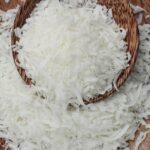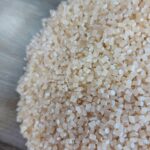CASHEW NUT SHELL OIL
In the ever-evolving world of snacks, manufacturers are constantly seeking innovative ingredients that not only enhance the taste and texture of their products but also offer practical benefits in the production process. One such ingredient that has gained significant attention is modified tapioca starch. This versatile starch derivative has become a key player in the snacks industry, offering several advantages that make it an indispensable component for modern snack manufacturers. In this blog post, we’ll explore the three key advantages of using modified tapioca starch in snacks manufacturing.

Table of Contents
Toggle1. Improved Texture and Crispiness
One of the most sought-after qualities in snacks is the perfect balance of texture—crispy yet not too hard, and light without being too airy. Modified tapioca starch is particularly valued for its ability to enhance these textural attributes. When used in snack formulations, it contributes to a light, crispy texture that is highly appealing to consumers.
The structure of modified tapioca starch is specifically designed to create a unique interaction with other ingredients, such as flours and seasonings, leading to a superior texture. This starch forms a network that traps air bubbles during the cooking process, which is essential for achieving that coveted crunch. Unlike some other starches, modified tapioca starch has a neutral taste and provides a smooth, consistent texture without altering the flavor of the snack. This makes it ideal for a wide range of snack products, from chips and crackers to extruded snacks and coated nuts.
The improved texture also extends to the shelf life of snacks, as products made with modified tapioca starch tend to retain their crispiness for longer periods, ensuring a satisfying crunch with every bite. This longevity in texture is particularly important in today’s market, where consumers expect high-quality snacks that maintain their appeal even after weeks of storage.
2. Enhanced Stability and Shelf Life
In addition to its textural benefits, modified tapioca starch plays a crucial role in enhancing the stability and shelf life of snacks. This starch is known for its excellent film-forming properties, which help to create a protective barrier on the surface of the snack. This barrier reduces moisture migration, which is a common cause of staleness in snack products.
By controlling moisture content, modified tapioca starch helps maintain the freshness and quality of snacks over time, reducing the likelihood of spoilage. The importance of moisture management in snacks cannot be overstated, as moisture is often the enemy of crispiness. By preventing moisture from penetrating the snack, modified tapioca starch ensures that the product remains as crunchy as the day it was made. This is particularly important for snacks that are stored for extended periods or transported over long distances. The ability to prolong shelf life without compromising on texture or flavor is a significant advantage for manufacturers looking to deliver consistent, high-quality products to consumers.
Moreover, in markets where transportation infrastructure may be challenging, the enhanced stability offered by modified tapioca starch can be a game-changer. It allows manufacturers to expand their distribution networks without worrying about the product degrading in quality before reaching the consumer.
3. Cost-Effective and Versatile
From a production standpoint, modified tapioca starch is an attractive ingredient due to its cost-effectiveness and versatility. It is relatively inexpensive compared to other starches, such as potato or corn starch, and can be easily incorporated into various snack formulations. Its versatility means it can be used in a wide range of applications, from binding and thickening to enhancing texture and stability.
Modified tapioca starch also offers benefits in terms of processing efficiency. Its properties allow for lower cooking temperatures and shorter cooking times, which can result in energy savings and increased throughput in production lines. Moreover, modified tapioca starch is compatible with both traditional and modern processing techniques, making it a flexible option for manufacturers. Whether it’s used in baked, fried, or extruded snacks, this starch can be adapted to meet the specific needs of the product being produced. This adaptability not only simplifies the manufacturing process but also allows producers to create a diverse range of snack products using a single ingredient.
Furthermore, the use of modified tapioca starch aligns well with the growing consumer demand for clean label products. As tapioca is naturally derived from cassava, a plant-based source, it appeals to consumers seeking natural and non-GMO ingredients in their snacks.

Conclusion
In the competitive world of snacks manufacturing, the choice of ingredients can make a significant difference in the quality and appeal of the final product. Modified tapioca starch stands out as a valuable ingredient that offers multiple benefits, including improved texture and crispiness, enhanced stability and shelf life, and cost-effective versatility. For snack manufacturers looking to innovate and stay ahead in the market, incorporating modified tapioca starch into their formulations is a smart choice that can lead to superior products and satisfied customers.
As consumers continue to demand high-quality, tasty, and long-lasting snacks, the role of modified tapioca starch in the industry is set to grow. By leveraging its unique properties, manufacturers can create snacks that not only meet but exceed consumer expectations, ensuring continued success in the competitive snacks market.












